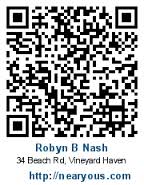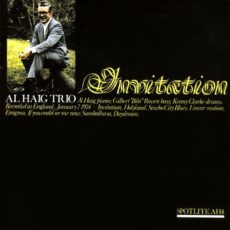
Daily Dose Of Jazz…
Gilbert Bibi Rovère was born on August 29, 1939 in Toulon, France and grew up in Nice, where he also attended the Conservatory beginning in 1954. He became part of the jazz scene there and for 17 years played the San Remo Festival.
In 1956, a move to Paris saw him working in the jazz clubs and by 1957 he started playing the double bass with Barney Wilen. Over the coming years he accompanied Duke Ellington, Sonny Rollins and Billie Holiday with Mal Waldron. Between 1962 and 1974 he was always part of the combos of Martial Solal and between 1962 to ‘63 he joined Bud Powell, Kenny Drew, Johnny Griffin, Dexter Gordon and Kenny Clarke.
During the Sixties Bibi went on to play with Art Simmons and Jean-Luc Ponty on his first album Jazz Longplaying. He also worked with the Swingle Singers, René Thomas and Cannonball Adderley. In 1966 he received the Prix Django Reinhardt.
During the Seventies he accompanied Al Haig on his album Invitation and in 1978 he retired from the music industry only to become re-active eight years later, performing with Bud Shank and Jackie McLean. In 1990 he played on Steve Grossman’s album My Second Prime.
On March 13, 2007 double bass and violincello player Bibi Rovère passed away in Menton on the French Riviera.
More Posts: bass,violincello
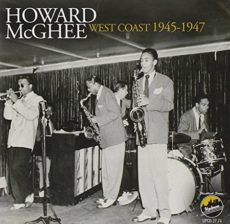
Daily Dose Of Jazz…
Roy Lee Porter was born on July 30, 1923 in Walsenburg, Colorado and moved from Walsenburg to Colorado Springs when he was eight years old and began playing drums in rhythm and blues bands while a teenager. He attended Wiley College in Texas briefly, where trumpeter Kenny Dorham was a fellow student. He joined Milt Larkin’s band in 1943, replacing Joe Marshall.
After military service Porter settled in Los Angeles, California and his talents were soon in demand by some of the pioneers of bebop. He worked with Teddy Bunn and Howard McGhee, making his first recordings with the latter. In 1946 he backed Charlie Parker on such Dial classics as A Night In Tunisia, Yardbird Suite, Ornithology and the unfortunate recording of Lover Man.
Playing on Los Angeles’ Central Avenue afforded him opportunities to perform with with Dexter Gordon, Wardell Gray and Teddy Edwards. In San Francisco, California he performed with Hampton Hawes and Sonny Criss. In 1949 Roy organized and went on the road with a big band that included Art Farmer, Jimmy Knepper and Eric Dolphy.
During the 1950s he was inactive as a jazz musician due to drug problems and only returned to music infrequently afterwards. Drummer Roy Porter never led a recording session and passed away on January 24 or 25, 1998 in Los Angeles.

More Posts: drums
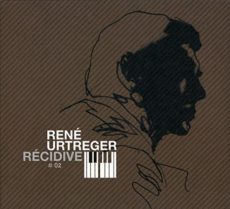
Daily Dose Of Jazz…
René Urtreger was born July 16, 1934 in Paris, France and began his private piano studies at the age of four, and then at the Conservatory. He studied with an orientation toward jazz, playing in a small Parisian club, the Sully d’Auteil, conducted by Hubert Damisch. The Sully boasted an orchestra of talented students including Sacha Distel and Louis Viale.
In 1953, Urtreger won first prize in a piano contest for amateurs, and from that moment decided to be a professional musician. 1954 saw him accompanying saxophonist Don Byas and trumpeter Buck Clayton in a Parisian concert. Their collaboration in the “Salon du Jazz” became one of the most highly requested French performances by the American musicians that toured the French capital.
After serving in the military from 1955 to 1957, René would play in a club on the left bank of the Seine, the famous Club Saint-Germain and again he collaborated with Miles Davis and Lester Young. His work so impressed the latter that he accompanied Young for a short tour of Europe in 1956, however the following year in December, he was part of Davis’s group which recorded the soundtrack to the film Ascenseur pour l’échafaud (Elevator to the Gallows).
The late 1950s had him working with Lionel Hampton, Stan Getz, Chet Baker, Dexter Gordon, Sonny Rollins and Ben Webster, among others. His canon of jazz work is still widely regarded as sensitive with a full, dense sound of swing. The Academie du Jazz of France formally recognized his accomplishments in 1961 with the Prix Django Reinhardt for outstanding jazz artist of the year. This win subsequently led to him providing soundtracks for films by Claude Berri and others.
Reappearing on the Paris jazz scene he resumed his career as a small-ensemble accompanist with Lee Konitz, Aldo Romano or Barney Wilen. He was featured at “Le Jazz Cool, Le Jazz Hot: A Celebration of Modern Jazz in Los Angeles and France” at the Getty Museum in Los Angeles, California in 2007. Pianist René Urtreger is currently 83 years of age and continues to perform.
Sponsored By
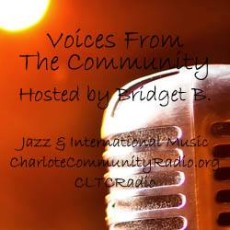
Voices From The Community
![]()
#preserving genius
More Posts: piano
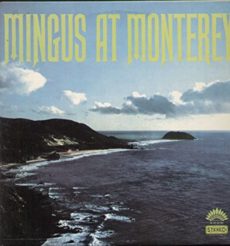
Daily Dose Of Jazz…
Melvin Moore was born on June 15, 1923 in Chicago, Illinois. In 1944 the trumpeter began his career playing with Lucky Millinder, then joined Duke Ellington’s Orchestra from 1948 to 1950. This he followed with performance in rhythm and blues bands. By 1951 he was recording with Dizzy Gillespie and singing on such titles as The Champ and Swing Low, Sweet Cadillac.
At the end of 1951 he was recording some vocal titles for King Records with Terry Gibbs, Billy Taylor, Mundell Lowe and Charles Mingus. In 1957 he was a member of Don Redman’s orchestra, the following year he recorded with John Pisano and with Billy Bean. Between 1964 and 1966 he worked with Gerald Wilson and he also accompanied Johnny Hartman. During the Sixties he performed on separate dates at the Monterey Jazz Festival with Mingus, Thelonious Monk and Dizzy Gillespie.
By 1967 he was playing in B.B. Kings band followed by the Seventies bands of Esther Phillips, T – Bone Walker, Don Sugarcane Harris, Johnny Otis, Jerry Garcia and Shuggie Otis and in the early 1980s with Ted Hawkins. Moore is not to be confused with the singer born in 1917, who sang with Jimmie Lunceford and Ernie Fields .
Trumpeter, violinist and singer of swing and bebop Mel Moore passed away on February 26, 1989 in New York City.
Sponsored By
#preserving genius
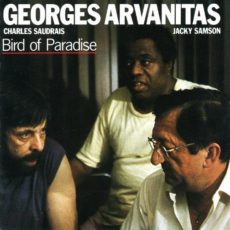
Daily Dose Of Jazz…
Georges Arvanitas was born on June 13, 1931 in Marseille, France, to Arvanite Greek immigrants from Constantinople, Turkey. At age four he began studying piano and initially trained as a classical pianist. Influenced by Bud Powell and Bill Evans he switched to jazz in his teens.
At 18 he was called up for military duty and finding himself stationed in Versailles and his proximity to Paris, he was exposed to the city’s thriving postwar jazz culture. Soon he was moonlighting at clubs alongside American musicians such as Don Byas and Mezz Mezzrow. After completing his service, Arvanitas relocated permanently to Paris where he led the house band at the Club St. Germain before he graduated to the city’s premier jazz venue, the legendary Blue Note. There he played with Dexter Gordon and Chet Baker. As his notoriety grew, he became a leader and with bassist Doug Watkins and drummer Art Taylor recorded 3 A.M. in 1963. The trio would go on to win the Prix Django Reinhardt and the Prix Jazz Hot for the album.
Georges spent half of 1965 in New York City collaborating with saxophonist Yusef Lateef and trumpeter Ted Curzon on The Blue Thing and the New Thing for Blue Note. A year later he returned stateside on tour with trombonist Slide Hampton’s big band. A respected session player earning the nickname Georges Une Prise (One-take George) for his reliable efficiency and mastery and worked closely with Michel Legrand.
Best remembered for a series of LPs he cut with bassist Jacky Samson and drummer Charles Saudrais, the trio endured from 1965 to 1993. He was received the Chevalier des Arts et des Lettres award in 1985. Unfortunately his failing health forced him to retire from music in 2003 and two year later pianist and organist Georges Arvanitas passed away in Paris on September 25, 2005.

#preserving genius



